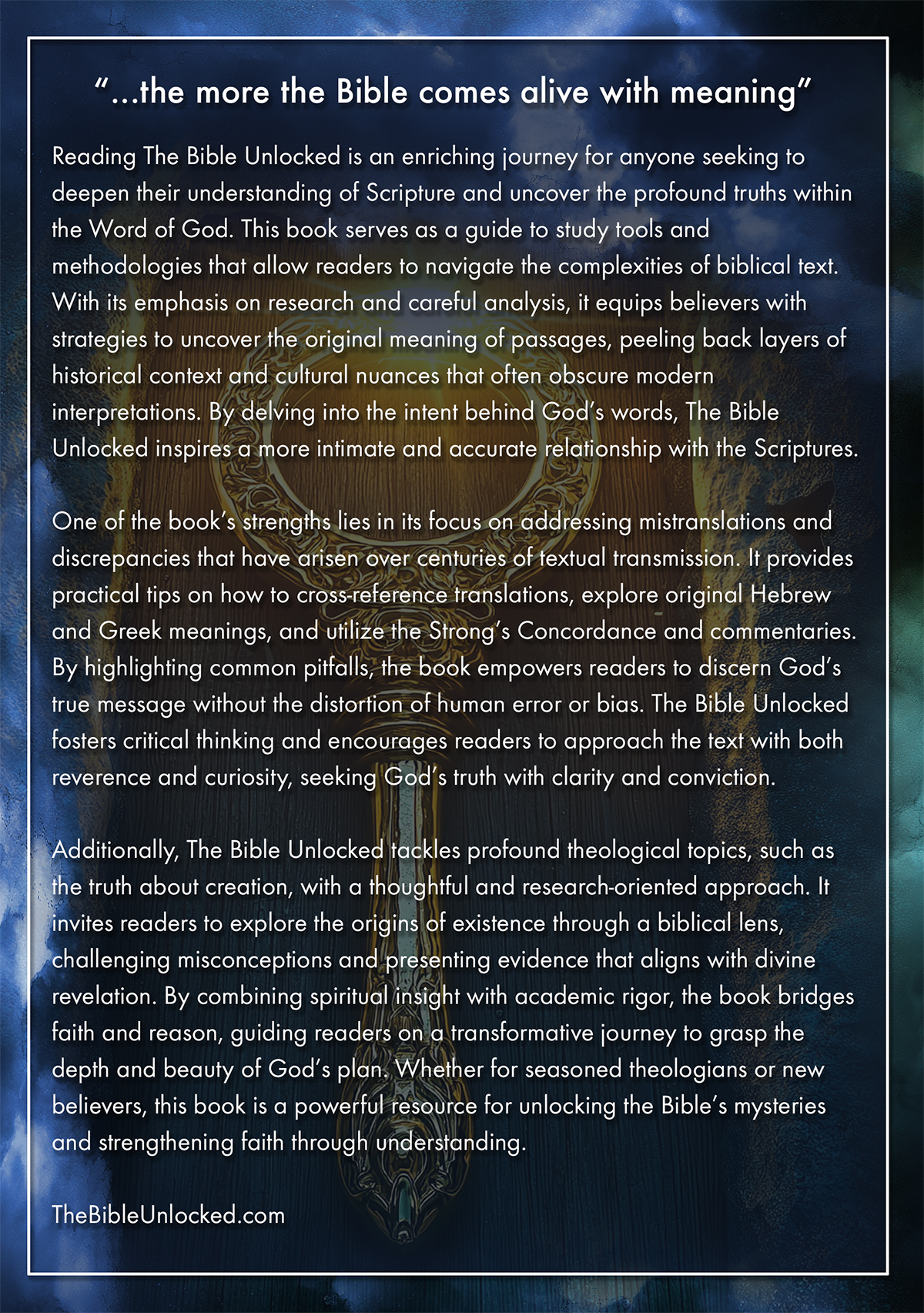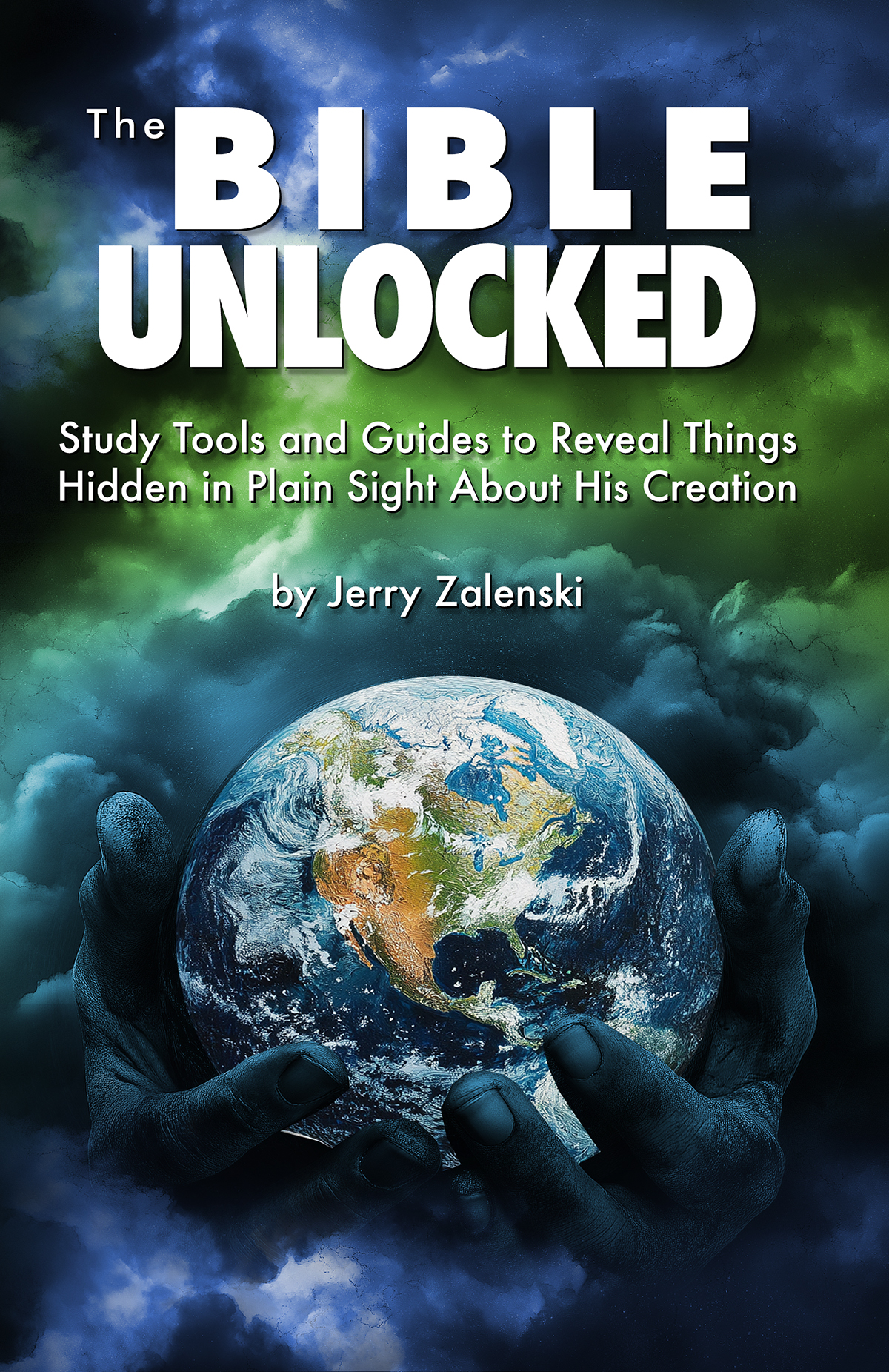

"...the more the Bible comes alive with meaning"
Reading The Bible Unlocked is an enriching journey for anyone seeking to deepen their understanding of Scripture and uncover the profound truths within the Word of God. This book serves as a guide to study tools and methodologies that allow readers to navigate the complexities of biblical text. With its emphasis on research and careful analysis, it equips believers with strategies to uncover the original meaning of passages, peeling back layers of historical context and cultural nuances that often obscure modern interpretations. By delving into the intent behind God's words, The Bible Unlocked inspires a more intimate and accurate relationship with the Scriptures.
CHAPTER 4
Satan’s primary mission was to disrupt the bloodline of Jesus Christ. Following the sin in the Garden of Eden, he succeeded in his first attempt by producing Cain, who later murdered his brother Abel. Abel would have been a direct bloodline descendant of Christ, but Satan’s interference was aimed at stopping God’s plan.
Cain’s story raises further questions. After committing murder, Cain departed to the land of Nod and took a wife. But whom did he marry? It is unlikely to have been a sister, as Adam and Eve had no other children at the time. The land of Nod, where Cain settled, was named and populated by those created on the sixth day. Individuals from the sixth day had already moved into and inhabited that region long before Cain’s arrival.
Cain settled in the land of Nod and took a wife from among the women created during the sixth day of creation. Many people are unaware that women existed before Eve, as they were part of the beings made on the sixth day.
Let’s explore some key details about Cain. After Cain killed Abel, God punished him by declaring that he would no longer be able to cultivate the land. Cain was destined to live as a fugitive and a wanderer. This is why, according to some interpretations, Cain’s descendants have been unable to farm independently and must rely on others to cultivate the land for them.
When Cain expressed that his punishment was too severe to bear, the Scripture is written, “And the LORD said unto him, Therefore whosoever slayeth Cain, vengeance shall be taken on him sevenfold. And the LORD set a mark upon Cain, lest any finding him should kill him.”
Pause for a moment. If Cain was the only living child of Adam and Eve at the time, why would he fear being killed by others? And why would God warn that anyone who harmed Cain would suffer sevenfold vengeance?
The answer lies in the presence of the sixth day creation. Cain feared that, outside the protection of the Garden of Eden, these other beings might seek to harm him.
The more one studies, the more the Bible reveals its deeper meanings. For some, this exploration may shed light on long-standing questions, offering insights into topics such as the sixth day creation, Cain’s exclusion from Adam’s genealogy, the land of Nod, and the origins of Cain’s wife and children.
Returning to a broader context, a third of the angels followed Satan during the First Earth Age. After Satan’s rebellion, these angels returned to Heaven, awaiting their turn to be born of women. However, some grew impatient and desired to interact physically with women instead.
For those who find the idea of angels engaging with human women difficult to accept, consider this: the Bible states that God created man in His image and in the image of the angels. If humans, made in this image, possess physical forms and reproductive organs, and are without wings, it follows that angels, including Satan, share the same characteristics.
This perspective may provide new understanding to those seeking clarity on these ancient narratives.
Many people may not envision angels as they truly are, largely due to the widespread images of angels dressed in white gowns with wings. However, for those who believe in the written account that God created both man and angels in His image, it might be time to reconsider these traditional portrayals.






